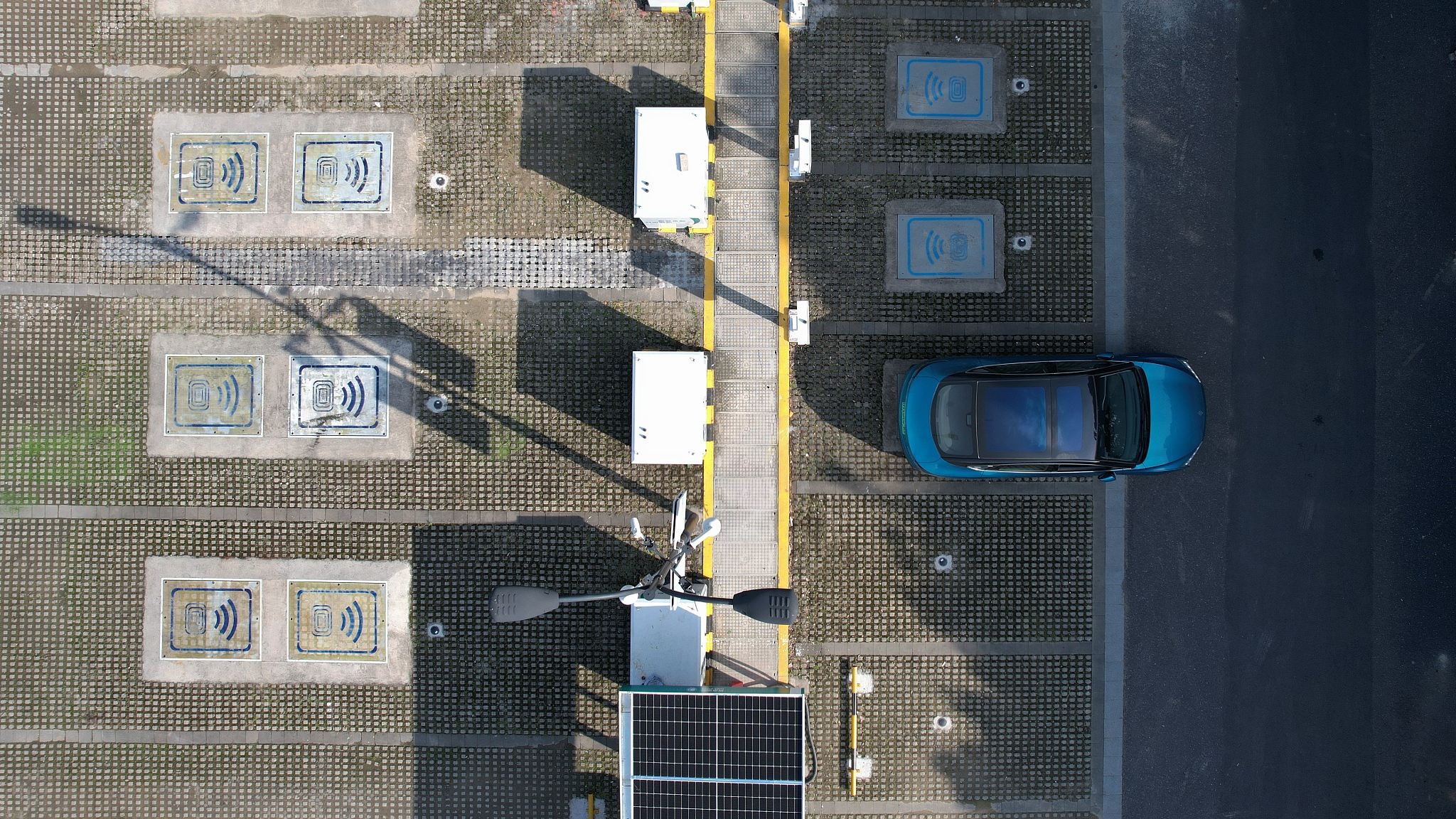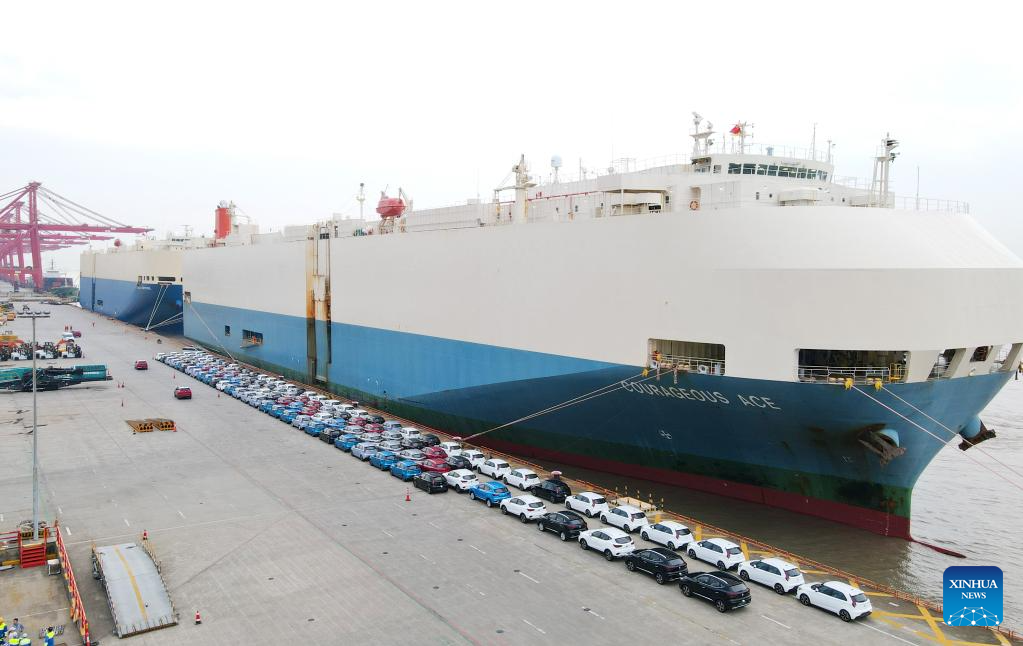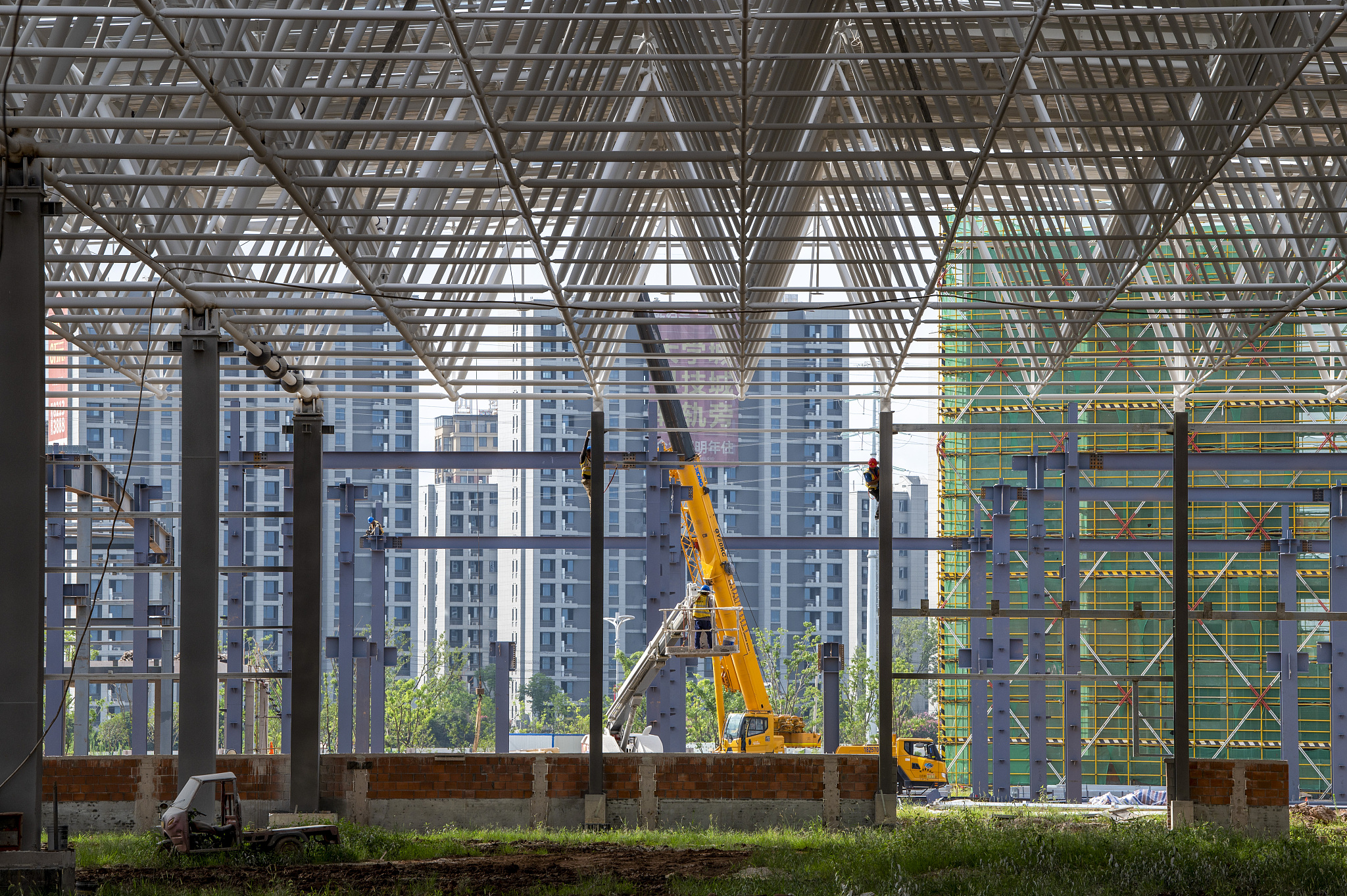
A new energy vehicle equipped with wireless charging capability is being charged at a wireless charging facility at the charging station at the Asian Games Village, Hangzhou, capital of east China's Zhejiang Province, August 7, 2023. /CFP
A new energy vehicle equipped with wireless charging capability is being charged at a wireless charging facility at the charging station at the Asian Games Village, Hangzhou, capital of east China's Zhejiang Province, August 7, 2023. /CFP
China is on track to become the world leader in exporting new-energy vehicles (NEVs), underlined by its consistent growth in production, exports and potential for consumption.
In the first half of 2023, sales of China-produced NEVs reached 3.65 million units, accounting for more than 60 percent of the global NEV market, according to Cui Dongshu, the secretary general of the China Passenger Car Association, on August 5.
Over the past two years, China's automobile export market has shown strong growth. A notable catalyst behind this growth can be attributed to the substantial increase in the export of NEVs, said Cui.
Take Waigaoqiao Haitong pier, one of China's largest auto-export terminals as an example.
"Since the start of this year, the terminal has been running at full capacity," said Liu Jietao, a staff member in the operation department of Waigaoqiao Haitong International Automotive Terminal. "On one of the busiest days, there were over 9,900 vehicles exported from here, and nearly half of them are new energy vehicles."
In the first five months of 2023, the export of electric passenger vehicles from Shanghai witnessed a year-on-year growth of 152.9 percent, according to data from Shanghai Customs.

An aerial photo shows MG cars produced by Shanghai Automotive Industry Corp (SAIC) to be shipped to Australia at Shanghai Haitong International Automotive Terminal in Waigaoqiao of east China's Shanghai, July 9, 2023. /Xinhua
An aerial photo shows MG cars produced by Shanghai Automotive Industry Corp (SAIC) to be shipped to Australia at Shanghai Haitong International Automotive Terminal in Waigaoqiao of east China's Shanghai, July 9, 2023. /Xinhua
Nationwide, China's vehicle exports soared to approximately 1.07 million units in the first quarter of 2023, according to the General Administration of Customs. During this period, China's exports of NEVs accounted for an nearly 45 percent of its total automobile exports, amounting to around 9.55 billion US dollars.
The strong growth momentum of China's auto exports will continue until the end of 2023, said Cui. This sustained expansion shows China's ascent as a global powerhouse in the automobile industry.
Behind the soaring export
In recent years, Chinese automakers have made substantial investments in research and development, leading to the production of high-quality vehicles that now stand on par with their international counterparts. Notably, this category includes NEVs.
During the first half of 2023, the production of NEVs grew more than 42 percent compared to the previous year, yielding almost 3.79 million units. Correspondingly, NEV sales increased 44 percent, reaching nearly 3.75 million units, data from the China Association of Automobile Manufacturers showed.
In 2022, China maintained its dominance in the production and sales of NEVs for the eighth consecutive year, which can be attributed to the innovative practices taking place within intelligent NEV factories.
In a new energy vehicle assembly workshop in Changzhou, Jiangsu Province, hundreds of industrial robots collaborate meticulously, with their mechanical arms ceaselessly toiling in production.
However, it's not just traditional automation that drives these processes. Behind the scenes, invisible AI vision algorithms and quality early warning systems meticulously oversee each facet of the production line.
Much like the NEV assembly workshop in Changzhou, similar facilities are widespread across China, spanning regions like Zhejiang, Sichuan, and Fujian. These regions have initiated strategic measures to expedite the growth of the new-energy automobile industry.
For instance, Zhejiang has outlined a plan for the coming years. By 2025, the annual NEV output are expected to surpass 1.2 million units, accounting for over 60 percent of the province's total automobile production. Also, more than 100,000 charging units will be installed in public areas by the same year.

Workers are building the factory grid at the construction site of a new energy auto parts industrial park, Jinhua City, east China's Zhejiang Province, August 4, 2023. /CFP
Workers are building the factory grid at the construction site of a new energy auto parts industrial park, Jinhua City, east China's Zhejiang Province, August 4, 2023. /CFP
Resilient domestic market for NEVs
NEVs are becoming more popular among Chinese consumers. As of 2022, there were 226 vehicles per 1,000 people in China. As many families still don't own a car, there is room for growth in the auto market, according to Fu Bingfeng, executive vice president of the China Association of Automobile Manufacturers.
Fu also noted that rural areas are expected to witness more rapid market growth, predicting that the number of vehicles per 1,000 people could potentially surge to 400 in the future.
Over the past few years, China has introduced policies to bolster the construction and maintenance of charging infrastructure in rural areas, as well as supporting the purchase and use of new energy vehicles.
Other measures include streamlining the process of registering second-hand car transactions across different provinces, as well as constructing new energy charging piles and parking spaces.
China's NEVs are also gaining favor among consumers due to their innovative design and cost-effectiveness, as noted by Liu Kexin, a senior researcher of China Automotive Strategy and Policy Research Center. For younger consumers, factors such as aesthetics, personalization, and technological sophistication have become pivotal in influencing their decisions when buying a car.
Liu believes that by introducing smarter products that closely align with consumer preferences, it will pave the way for the emergence of more new formats and models. This, in turn, is expected to act as a driving force, propelling the consumption of new energy vehicles.